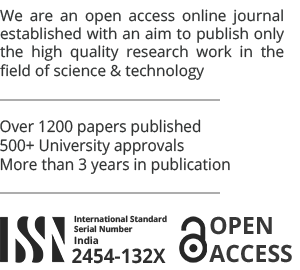This paper is published in Volume-11, Issue-1, 2025
Area
Computer Science And Engineering
Author
Purvank Chauhan, Shubham Upadhyay
Org/Univ
Parul University, Vadodara, Gujarat, India
Keywords
Cab Fare Prediction, Machine Learning, Gradient Boosting, XGBoost, Regression Models, Feature Engineering, Hyperparameter Tuning, Urban Transportation, Fare Estimation, Data Science.
Citations
IEEE
Purvank Chauhan, Shubham Upadhyay. Cab Fare Prediction Machine Learning Model, International Journal of Advance Research, Ideas and Innovations in Technology, www.IJARIIT.com.
APA
Purvank Chauhan, Shubham Upadhyay (2025). Cab Fare Prediction Machine Learning Model. International Journal of Advance Research, Ideas and Innovations in Technology, 11(1) www.IJARIIT.com.
MLA
Purvank Chauhan, Shubham Upadhyay. "Cab Fare Prediction Machine Learning Model." International Journal of Advance Research, Ideas and Innovations in Technology 11.1 (2025). www.IJARIIT.com.
Purvank Chauhan, Shubham Upadhyay. Cab Fare Prediction Machine Learning Model, International Journal of Advance Research, Ideas and Innovations in Technology, www.IJARIIT.com.
APA
Purvank Chauhan, Shubham Upadhyay (2025). Cab Fare Prediction Machine Learning Model. International Journal of Advance Research, Ideas and Innovations in Technology, 11(1) www.IJARIIT.com.
MLA
Purvank Chauhan, Shubham Upadhyay. "Cab Fare Prediction Machine Learning Model." International Journal of Advance Research, Ideas and Innovations in Technology 11.1 (2025). www.IJARIIT.com.
Abstract
Predicting cab fares accurately is crucial for urban transportation, benefiting both passengers and service providers. This research explores machine learning techniques to enhance fare prediction using real-world trip data. Various models, including Linear Regression, Decision Trees, Random Forest, Gradient Boosting, and XGBoost, were evaluated. The Gradient Boosting Regressor emerged as the best-performing model after hyperparameter tuning, achieving high prediction accuracy. The study highlights the significance of trip distance and pickup time in fare estimation. Future enhancements include integrating weather data and deploying the model as a real-time API service to improve usability and precision.

